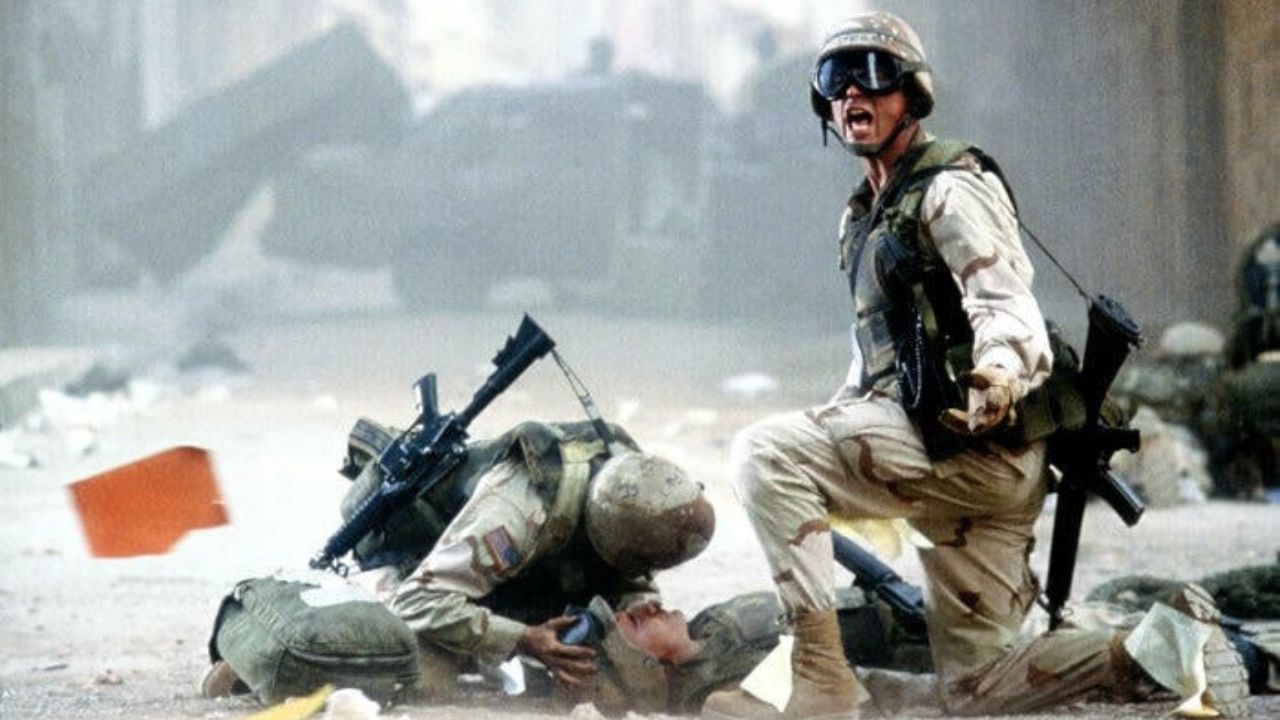Black Hawk Down: The Ultimate “Inside the Battlefield” Experience.

Ridley Scott’s Black Hawk Down, with a budget of $92 million and a box office gross of $172 million, takes audiences to the heart of combat like no other film. It creates an illusion of being present in the midst of a fierce battle that is as close to reality as can be.
Scott’s superb technical skills are evident throughout, leading to the movie winning two Oscars for Best Sound and Best Film Editing. Newsweek’s Evan Thomas even hailed it as one of the most culturally significant films of the George W. Bush presidency.
While there are other great war movies, such as Patton, Platoon, Apocalypse Now, and Saving Private Ryan, none rival Black Hawk Down in terms of providing an authentic battle experience. It’s this realism, combined with an outstanding cast and gripping narrative, that makes the film a favorite for many.
A Blend of Reality and Fiction
Despite its accuracy in depicting military action, Black Hawk Down is, at its heart, a movie. It’s a blend of true events and fictional elements added for entertainment value. With a runtime of two hours and 32 minutes, the film manages to compress a complex series of events into a gripping narrative.
One memorable scene involves Norm “Hoot” Hooten, a Delta Force Operator played by Eric Bana. Upon his return from a reconnaissance mission, Hoot is reprimanded by CPT Steele, the stern Ranger Company commander, played by Jason Isaacs, for not following the base’s weapon safety condition rules. Hoot’s response, holding up his trigger finger and saying, “this is my safety, sir,” illustrates the boldness and independence of Delta Operators.
However, this scene is a blend of reality and fiction. The real-life Hoot, a former Delta Force soldier who retired as a Master Sergeant in 2001 and served in Somalia as part of Operation Gothic Serpent, revealed that the scene combined a close-quarters battle training session, his encounter with the Ranger captain, and a reenactment by the soldiers.
What Really Happened
Hoot explained that he had provided marksmanship and tactics training for the Rangers assigned to Task Force Ranger. During these sessions, Hoot stressed the importance of keeping the weapon on safe and the trigger finger off the trigger. When confronted by Steele about his weapon’s safety, Hoot explained the Delta Force’s different safety rules.
While most troops in a combat zone maintain a Condition 3 weapon, Delta Force soldiers had different procedures. For them, a clear weapon meant dropping the hammer, which prevented the weapon from going on safe. This allowed soldiers to immediately know if their weapon was loaded or not. Hoot’s explanation to Steele, though, fell on deaf ears.
Heroic Sacrifice
Another poignant scene that left a lasting impact on viewers was the depiction of the actions of Medal of Honor recipients MSG Gary Gordon and SFC Randy Shughart. These Delta snipers died protecting a wounded Black Hawk pilot during the Battle of Mogadishu.
Despite being armed only with personal weapons and sidearms, Gordon and Shughart fought off rebel attacks before succumbing to Somali bullets. Their heroic sacrifice was a testament to the bravery of the soldiers involved in the operation.
A Film, Not a Documentary
In its essence, Black Hawk Down is a movie, not a documentary. Its goal is to entertain, and in that, it succeeds magnificently. However, it also serves to commemorate the bravery and sacrifice of the soldiers who fought in the Battle of Mogadishu. It’s a film that blends reality and fiction seamlessly, presenting audiences with a visceral “inside the battlefield” experience that remains unmatched.






